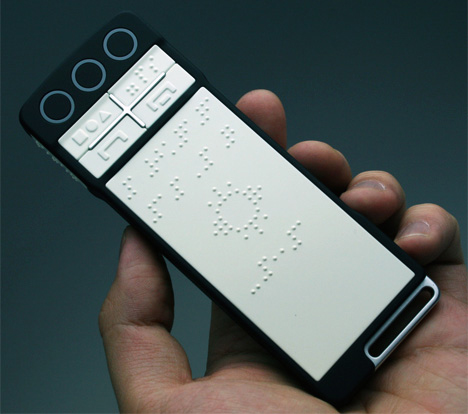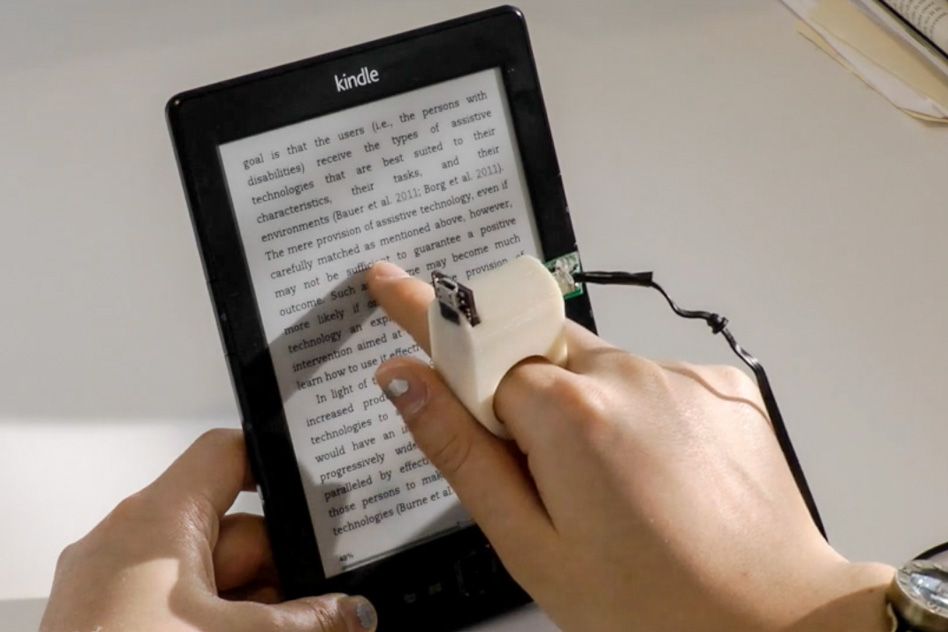An Overview to Life-Changing Assistive Innovation for the Blind and Visually Impaired
The development of assistive modern technology has actually ushered in a transformative era for people who are blind or visually damaged, offering tools that boost freedom and enhance daily experiences. Technologies such as clever navigation tools and AI-driven applications are redefining exactly how individuals engage with their environments, while accessible analysis options and smart home modern technologies guarantee to more raise the top quality of life.
Smart Navigation Devices
Smart navigation tools are revolutionizing the way individuals who are visually impaired or blind interact with their environment. These advanced innovations, which incorporate general practitioners, audio comments, and haptic signals, supply individuals with important details concerning their environments, improving their self-reliance and wheelchair.
One famous example is the use of smart canes geared up with sensors that spot challenges and supply real-time comments through vibrations or audio signs. These devices enable users to browse intricate environments, such as busy roads or crowded public areas, with enhanced confidence. In addition, wearable tools, such as wise glasses, are being developed to help in acknowledging faces, reading message, and determining objects, further boosting the individual's spatial awareness.
In addition, smart navigating devices are increasingly including man-made intelligence to assess data and adapt to individuals' preferences. This customized strategy not only improves navigating efficiency yet also cultivates a sense of empowerment amongst individuals. As modern technology continues to advancement, the possibility for smart navigating tools to create a more accessible and inclusive globe for individuals who are visually damaged or blind remains appealing, inevitably reshaping their everyday experiences and communications.
Innovative Mobile Applications
Mobile applications are becoming effective devices for helping individuals who are aesthetically impaired or blind, using a range of capabilities that boost daily living. These applications harness advanced modern technology to facilitate everyday jobs, improve ease of access, and promote self-reliance.
One category of innovative mobile applications concentrates on visual acknowledgment. Applications like Be My Eyes attach users with sighted volunteers through video clip telephone calls, making it possible for real-time support for jobs such as reviewing tags or browsing unfamiliar environments. Apps like Seeing AI utilize synthetic intelligence to explain surroundings, checked out text, and recognize things, giving customers with crucial information at their fingertips.
Another substantial location is navigating and positioning. Apps such as Aira and Neighboring Traveler supply audio advice, aiding customers browse metropolitan spaces easily. They provide individualized help, permitting a much more confident expedition of the atmosphere.
Additionally, health and wellness and wellness applications provide to certain requirements, such as medication management and health and fitness monitoring. These applications aim to foster an all natural strategy to wellness, guaranteeing that users can keep their health and wellness independently.
Wearable Assistive Instruments
Wearable assistive gadgets represent a significant advancement in modern technology developed to support people who are blind or aesthetically impaired. These tools boost movement and independence by supplying real-time feedback regarding the surrounding environment. Amongst the most significant wearable technologies are smart glasses furnished with video cameras and sensing units, which can determine challenges and relay crucial details through sound hints.

One more innovative alternative includes wrist-worn tools eye exam prices near me that use ultrasonic waves to spot barriers and offer navigational support. These tools commonly come with personalized settings, permitting individuals to customize the informs to their specific requirements.
The integration of artificial knowledge in wearable assistive modern technology is additionally significant, as it consistently enhances the accuracy and responsiveness of these devices. Overall, wearable assistive devices are changing the lives of the visually impaired and blind, cultivating greater freedom and boosting lifestyle via innovative options.
Accessible Checking Out Solutions
Obtainable reading services play an essential duty in enabling individuals who are visually damaged or blind to involve with text throughout numerous layouts. These services include a series of technologies and tools developed to improve analysis experiences, from typical print materials to digital material.
One noticeable solution is Optical Character Acknowledgment (OCR) technology, which converts printed message into electronic format, allowing individuals to listen to or read the material utilizing screen visitors. Furthermore, specialized e-readers furnished with text-to-speech capacities supply personalized analysis experiences, making it possible for customers to readjust font dimensions and background shades for improved presence.
An additional reliable approach is braille displays, which supply responsive responses by transforming digital text into braille. This allows people to go through touch, fostering greater self-reliance and accessibility to literature. Mobile applications made for reviewing scanned papers or publications can equip users with instantaneous accessibility to a vast library of materials (Braille displays and notetakers).

Smart Home Technologies
Smart home innovations have transformed the method individuals who are blind visit here or visually damaged engage with their living atmospheres, improving both self-reliance and security. These innovative remedies leverage automation and connection to develop an obtainable space customized to the requirements of users.
Smart speakers and voice-activated aides provide hands-free control over different gadgets, allowing customers to change safety and security, lights, and temperature level actions with simple voice commands. This capability reduces dependence on sighted support and cultivates a sense of autonomy. In addition, smart lighting systems can be customized to supply auditory responses or tactile signs, enabling people to navigate their homes much more efficiently.
In addition, safety and security systems outfitted with wise electronic cameras and sensors can send out real-time alerts to individuals, boosting personal safety without requiring aesthetic confirmation. Automated door locks use tranquility of mind, allowing individuals to safeguard their homes effortlessly.
Incorporating clever kids glasses home technologies not only improves everyday living but also motivates social communication via connected gadgets - Braille displays and notetakers. With continuous innovations in assistive technology, the future appears promising, as more options will certainly arise to more empower individuals who are visually impaired or blind, making sure an extra inclusive and independent way of living
Verdict
Finally, the advancements in assistive technology for the blind and aesthetically damaged stand for a substantial jump towards improving self-reliance and lifestyle. Smart navigating devices, ingenious mobile applications, wearable tools, obtainable reading solutions, and clever home innovations jointly cultivate a comprehensive environment. This assimilation of modern technology not only boosts wheelchair and daily living yet likewise empowers people to engage totally with their environments, promoting better autonomy and participation in culture.
Innovations such as clever navigation tools and AI-driven applications are redefining how customers communicate with their environments, while available analysis services and wise home innovations assure to further boost the quality of life. As innovation proceeds to advancement, the possibility for clever navigation devices to create a much more comprehensive and available world for people who are aesthetically impaired or blind stays encouraging, eventually improving their daily experiences and interactions.
Wearable assistive tools stand for a significant advancement in innovation created to sustain individuals who are blind or aesthetically impaired. Amongst the most remarkable wearable technologies are smart glasses furnished with sensors and video cameras, which can determine barriers and relay vital information with sound hints.
Smart navigating devices, cutting-edge mobile applications, wearable tools, accessible reading services, and wise home innovations jointly promote a comprehensive atmosphere.